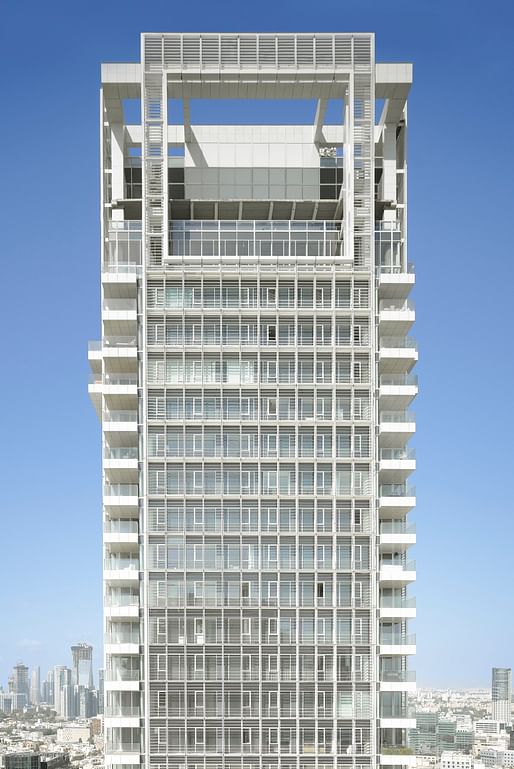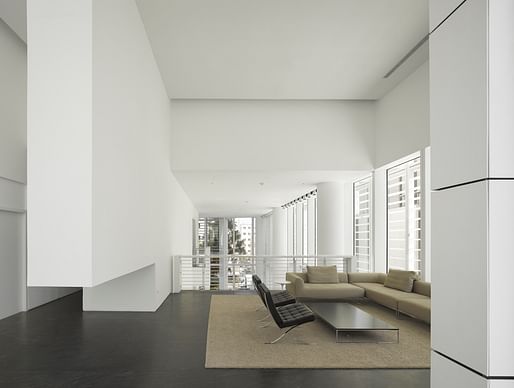
Tel Aviv has the largest concentration of buildings in the Bauhaus/International Style of any city in the world. With a collection of over 4,000 buildings covering almost one and a half square miles, the White City, as it is called, was largely created in the 1930s by a group of 200 German Jewish architects fleeing Nazi Germany who were heavily influenced by Bauhaus principles as well as modernists like Le Corbusier and Erich Mendelsohn.


Drawing on this rich architectural history, Richard Meier & Partners have just completed a new residential tower that draws inspiration from the Bauhaus design principles of its neighbors in the heart of the UNESCO World Heritage Site. Meier commented on the surroundings saying "the great thing about the site is that it's related to the whole city; it's related to all of the wonderful buildings of the 1930s and to the historic buildings of Rothschild Boulevard. It makes me very happy to be in such company."
Meier, who is known for his geometric and typically white buildings, is a wonderful architectural fit for the city. He also added that "the design of the buildings in the White City made a deep impression on me when I visited Israel many years ago, so to work in this context has been an aspiration of mine for a long time."

The residential tower is located on one of the principal streets in the center of Tel Aviv—a gracious civic and cultural promenade populated with a vibrant street culture. Design partner-in-charge, Reynolds Logan noted "the tower is deliberately lifted above the street on graceful piloti, with an undulating glass wall in deference to the importance of this important intersection of Rothschild and Allenby. The transparency and lofty openness of the ground floor lobby, garden, and retail spaces contribute to a vibrant streetscape."

A fundamental consideration shaping the design is this desire for lightness and transparency mentioned by Logan. A double layer façade comprised of clear glass with a delicate white louver screen, the design of which was inspired by traditional Middle Eastern clothing, blinds enclosing open air porches. The balconies, offered on every corner, are derived from the low to mid-rise neighboring buildings and a large “urban window” frames the western views to the sea from the Penthouse terraces.
4 Comments
Is Dick still hiding?
Getting a headache from staring at all those buildings?
great architecture, bad guy
The first and third photos are frustratingly ever so slightly off-center.
Block this user
Are you sure you want to block this user and hide all related comments throughout the site?
Archinect
This is your first comment on Archinect. Your comment will be visible once approved.